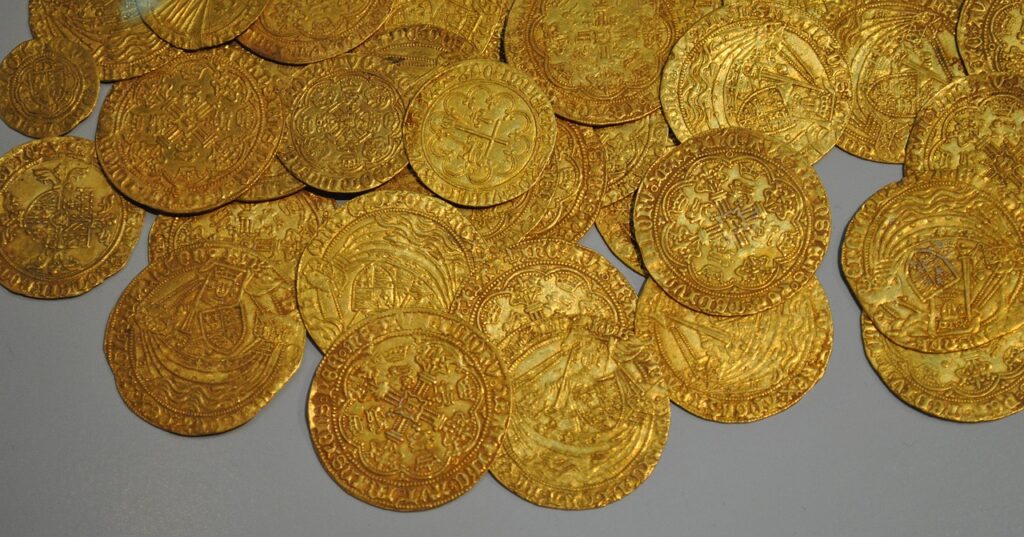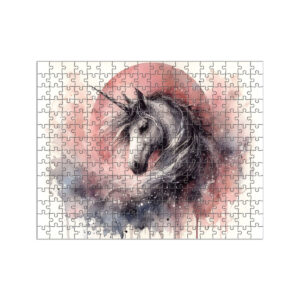
Explore & Play
Discover interesting topics and solve the accompanying crossword puzzle.
Old Coin Crossword | Impact of Ancient Currency
Table of Contents
Welcome to our exploration of historical coins! To start, we invite you to engage with our “old coin crossword” puzzle. This fun and interactive crossword will challenge your knowledge of antique currency and set the stage for the deeper insights to follow.
If you’re already familiar with the topic, diving into the crossword first will enrich your understanding of the article that follows. However, if you’re new to the world of old coins, feel free to read through the article first to build your knowledge base, and then return to tackle the crossword with newfound expertise. Enjoy the journey through history and discover the fascinating stories behind these remarkable coins!
Old Coin Crossword
You can either fill in the crossword puzzle directly on this page or click the button in the bottom right corner to print it for free.

Famous Historical Coins and Their Impact on Economics
Coins have long been more than mere currency; they serve as artifacts of historical and economic significance that offer insights into the cultures and economies of their times. Throughout history, various coins have emerged, each with unique features and profound impacts on trade, economy, and even art. This article delves into some of the most famous historical coins and explores their roles in shaping economic systems and cultural landscapes. Additionally, we’ll touch upon a crossword puzzle themed around these coins, providing an engaging way to test your knowledge of these historical treasures.
Ancient Coins and Their Legacy
Roman Coins: Sestertius, Denarius, and Solidus
Roman coinage, with its various denominations such as the sestertius, denarius, and solidus, reflects the complex economic structures of ancient Rome. The Roman Empire’s coinage system was sophisticated, designed to facilitate trade, taxation, and military pay.
Sestertius: Originally a large brass coin, the sestertius was a cornerstone of Roman currency. First minted in the late Republic, it became an important coin during the Empire. The sestertius was used for substantial transactions and was often employed in state payments and large-scale economic activities. Its widespread use is a testament to its central role in the Roman economy.
Denarius: The denarius, a silver coin introduced in the early Republic, became the main currency for everyday transactions. With its high silver content, the denarius was the standard unit of account for Roman monetary policy. It circulated extensively, facilitating trade across the vast Roman Empire.
Solidus: Introduced by Emperor Constantine I in the early 4th century, the solidus became a crucial part of Byzantine currency. Its gold content made it a stable and reliable medium of exchange, and it remained in use for over a thousand years. The solidus exemplified the economic stability and continuity of the Byzantine Empire.
Greek Contributions: Drachma and Stater
Ancient Greece’s coinage, including the drachma and stater, provides crucial insights into their trade practices and economic systems. Greek city-states were known for their coinage innovations, which played a pivotal role in their economies.
Drachma: The drachma was a silver coin that varied in weight and value across different Greek city-states. It became a common unit of trade and a standard for pricing goods and services. The drachma’s prominence in Greek trade reflects the economic importance of coinage in facilitating commercial activities.
Stater: The stater was a larger denomination, used for more significant transactions. It often featured intricate designs and was valued higher than the drachma. The stater’s use underscores the Greeks’ sophisticated approach to currency, catering to both everyday and substantial financial dealings.
Medieval and Renaissance Coinage
The Florin: A Medieval European Gold Coin
The florin, minted in Florence, was a gold coin that became a cornerstone of medieval European trade and commerce. Introduced in 1252, the florin was renowned for its consistent weight and purity, which made it a trusted currency across Europe.
The florin’s impact was significant; it facilitated trade across the continent and established Florence as a major financial center. Its wide acceptance and stability influenced other regions to adopt similar gold coins, shaping the monetary landscape of medieval Europe.
The Guilder and its Role in Trade
The guilder, widely used in the Netherlands and Belgium, played a significant role in European trade and economic history. Originating in the late 13th century, the guilder was initially a gold coin before transitioning to silver.
The guilder’s influence extended beyond the Dutch borders, becoming a key currency in international trade. Its stability and reliability made it a preferred choice for merchants and traders, contributing to the economic prosperity of the Netherlands during the 16th and 17th centuries.
The Taler: A Standard of Silver Coinage
The taler, a large silver coin, became a standard across Europe and influenced the development of many modern currencies. First minted in the 15th century in the Holy Roman Empire, the taler’s consistent weight and silver content established it as a widely accepted medium of exchange.
The taler’s impact was far-reaching; it served as a model for various other currencies and played a crucial role in European trade. Its influence on the monetary systems of different countries demonstrates the taler’s importance in shaping economic practices.
Colonial and Early Modern Coins
Spanish Doubloon and Real
Spanish coins such as the doubloon and the real were instrumental in the colonial economies and global trade during the Age of Exploration. The doubloon, a gold coin first issued in 1537, became synonymous with wealth and treasure in the New World.
Doubloon: The doubloon’s significant gold content made it highly valued and widely used in colonial transactions. Its role in the transatlantic trade reflects its importance in the global economy during the 16th and 17th centuries.
Real: The real, another prominent Spanish coin, was used extensively throughout the Spanish Empire and its colonies. Its various denominations facilitated trade and economic activities across vast distances, underscoring its role in the global economy.
British Coins: Sovereign, Crown, and Farthing
British coinage, including the sovereign, crown, and farthing, reflects the evolution of the UK’s monetary system from the 15th century onward.
Sovereign: Introduced in 1489 by Henry VII, the sovereign became a symbol of British monetary stability. Its gold content and consistent weight made it a trusted coin, and it played a significant role in both domestic and international trade.
Crown: The crown, valued at five shillings, was introduced in 1526. It became an important part of British currency, used in everyday transactions and as a symbol of the British monetary system.
Farthing: The farthing, worth a quarter of a penny, was used before decimalization in 1971. Despite its small value, the farthing was an integral part of the British coinage system, reflecting the complexities of historical currency.
The Krugerrand and Its Modern Influence
Introduced in 1967, the Krugerrand represents a significant development in modern coinage, particularly in the realm of investment. As a gold coin from South Africa, it was designed to be easily accessible to investors.
The Krugerrand’s introduction marked a shift in how gold was traded, making it a popular investment vehicle. Its impact on the global market demonstrates the evolving nature of coinage and its role in modern financial systems.
Special Categories and Collectibles
Tokens and Exonumia: Beyond Traditional Currency
Tokens and exonumia represent fascinating alternatives to traditional coinage, offering insights into specific uses and local economies. Unlike standard coins, tokens were often issued for specific purposes or by private entities.
Exonumia: This category includes various collectibles related to coins, such as medals and tokens. Their historical significance lies in their reflection of specific events, institutions, or local economies.
Tokens: Used in specific contexts such as fairs, transportation, or trade, tokens provide a unique glimpse into localized economic practices and social history.
Rare and Collectible Coins: The Talbot, Louis d'Or, and Napoleon
Rare and collectible coins such as the Talbot, Louis d’Or, and Napoleon hold significant value not just for their metal content but for their historical context.
Talbot: A rare British coin with limited mintage, the Talbot holds value due to its historical significance and scarcity. Collectors prize it for its unique features and historical background.
Louis d’Or: This French gold coin, minted during the reign of Louis XIII, is valued for its historical importance and artistry. Its role in French currency history highlights the aesthetic and economic aspects of coinage.
Napoleon: The Napoleon coin, named after Napoleon Bonaparte, reflects the era’s political and economic climate. Its significance extends beyond its material value, representing a key historical figure.
The Science of Coinage: Alloy and Weight
Billon and Cupronickel: Coin Alloy Composition
The composition of coin alloys, including billon and cupronickel, plays a critical role in determining the durability and value of coins. Understanding these alloys provides insights into the technological advancements in coin production.
Billon: Billon is an alloy of silver and base metals, often used in historical coinage to reduce costs. Its use reflects historical practices in minting and the balance between value and affordability.
Cupronickel: Cupronickel, a combination of copper and nickel, became popular in modern coinage due to its durability and resistance to corrosion. Its use in contemporary coins demonstrates the advancements in material science.
Weight Measurements: Pennyweight and Beyond
Accurate weight measurements, such as pennyweight, are essential in determining the value and authenticity of precious metal coins. The pennyweight, approximately 1.555 grams, was used historically to weigh precious metals.
Pennyweight: This unit of weight, used in precious metal coinage, provides a standard for measuring and valuing coins. Its historical use underscores the importance of precise measurements in currency.
The Legacy of Historical Coins
The diverse array of historical coins, from the ancient sestertius to the modern Krugerrand, reflects the rich tapestry of human economic development and cultural exchange. These coins not only served as mediums of exchange but also as symbols of power, trade, and technological progress. As we’ve explored, each coin tells a story about its era, revealing how currency evolves alongside human society.
In conclusion, the study of historical coins offers valuable insights into the economic and cultural histories of different periods. Whether through a crossword puzzle or in-depth research, exploring these coins helps us appreciate their significance and the role they played in shaping the world we live in today.
Share to...
I hope you enjoy the content.
Want to receive our daily crossword puzzle or article? Subscribe!
You may also be interested in
Share to…
Want to receive our daily crossword puzzle?
-
Jigsaw Puzzles
Zodiac Ink Art Puzzle: The Playful Monkey 250 | 300 | 500 Pieces
kr 348,00 – kr 439,00Price range: kr 348,00 through kr 439,00 Select options This product has multiple variants. The options may be chosen on the product page -
Jigsaw Puzzles
Autumn Whiskers and Pumpkin Paws Puzzle 250 | 300 | 500 Pieces
kr 348,00 – kr 439,00Price range: kr 348,00 through kr 439,00 Select options This product has multiple variants. The options may be chosen on the product page -
Jigsaw Puzzles
Enchanting Unicorn Watercolor Jigsaw Puzzle 250 | 300 | 500 Brikker
kr 348,00 – kr 439,00Price range: kr 348,00 through kr 439,00 Select options This product has multiple variants. The options may be chosen on the product page

















